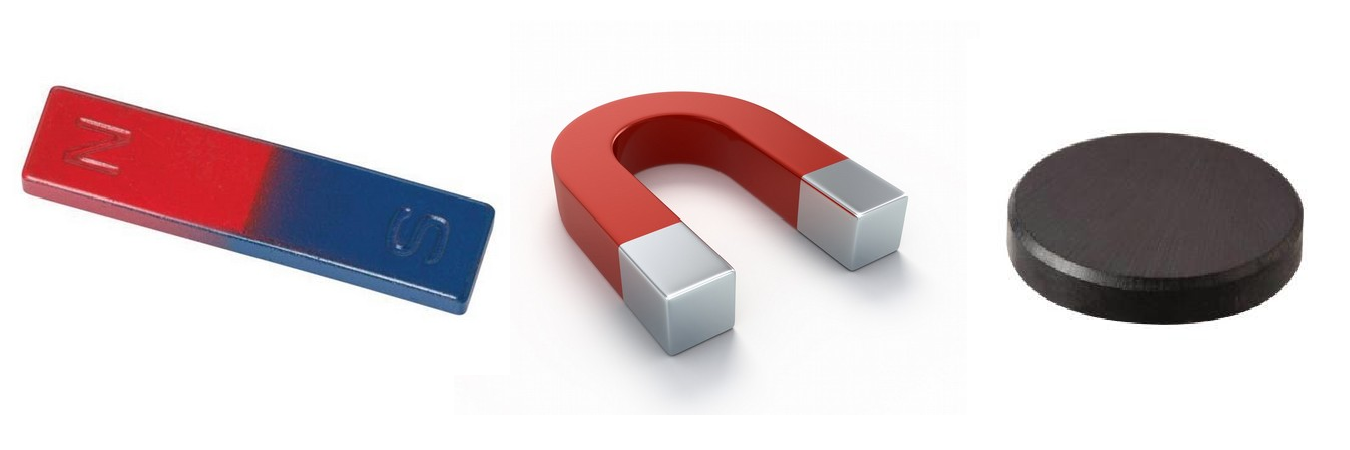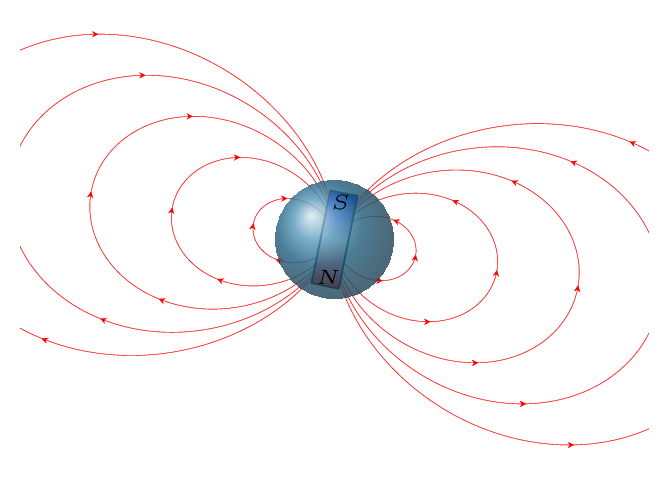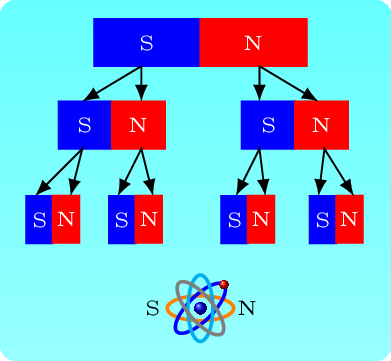Section 5.3 Magnetism



It is a branch of physics which deals with magnets and magnetic properties of materials. It defines the magnetic behavior of material which is associated with the motion of electric charge. The motion of charges in a conductor or in space gives rise to magnetic fields and magnetism is a result of magnetic fields. The word ”magnet” is taken from the Latin word \(\mu \alpha \gamma \nu \eta' \tau \eta \zeta \) \(\lambda \iota \theta o \zeta \) meaning stones from magnesia. ”Magnetis [líthos]” is a source of lodestones found in Manisa, Turkey. Magnetism is caused by moving charges and is experienced by moving charges. It is a phenomenon of materials by which they attract or repel other materials. The motion of an electron in an orbit around a nucleus or its spin on an axis produces a magnetic field.
The most familiar magnet is a bar magnet. It is a piece of iron bar that has been magnetized. However, other shapes of magnets Figure 5.3.1.(a) are also available these days such as disk magnet, horseshoe magnet, ring magnet, etc. In any magnet, there are two regions (normally at the ends or faces) where magnetic strength is very strong. These stronger regions are called magnetic poles. One is designated as north pole, N and the other as south pole, S. This is because when a magnet is hanged by a thread and allowed to rotate freely, it will align itself in a north-south direction, due to the earth’s magnetic field. The north end of the magnet will point towards the Earth’s geographic north pole and the south end towards the Earth’s geographic south pole. This is why north pole is also known as north seeking pole and the south pole as south seeking pole. The magnet also aligns at an angle itself with the earth’s horizontal plane. This angle is known as the angle of dip or inclination, it varies depending on the location on the earth surface. The magnet also aligns itself at an angle from the true north-south direction. This angle is known as magnetic declinaiton. The magnetic declination is the angle between magnetic north and true north direction. Magnetic north is the direction indicated by a compass, and true north is the direction of the Earth’s geographic north pole Figure 5.3.1.(b). This angle can vary depending on location and time.
Like poles of magnet repel and unlike poles attract. North and south poles always exist in pairs (there are no magnetic monopoles in nature), so if one were to split a permanent magnet in half, two smaller magnets would be created, each with a north pole and south pole. Even if one cuts a magnet into pieces all the way down to a single atom, they still get a N pole and a S pole because of orbiting electrons in the atom Figure 5.3.1.(c). Just like a gravitational force both electric and magnetic forces can act on the objects without being in direct contact.
